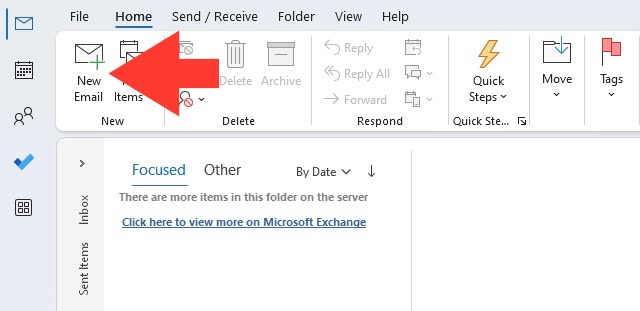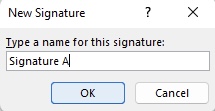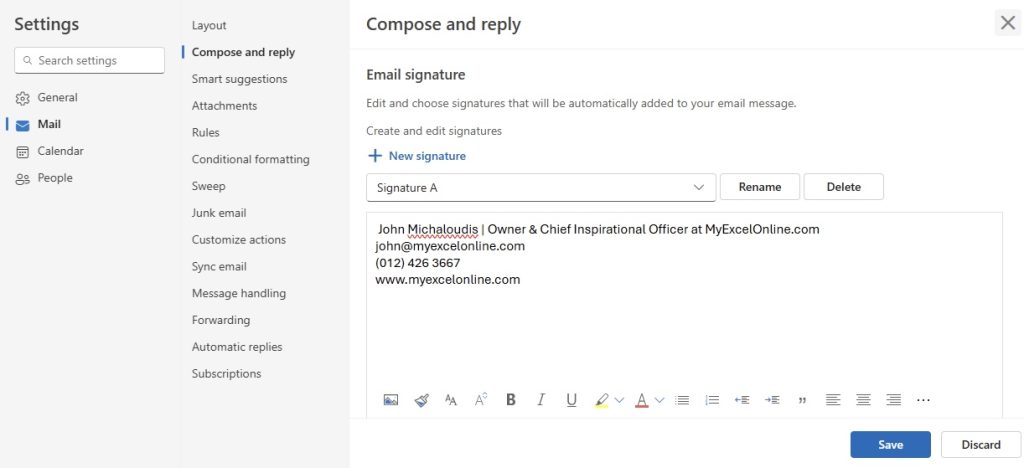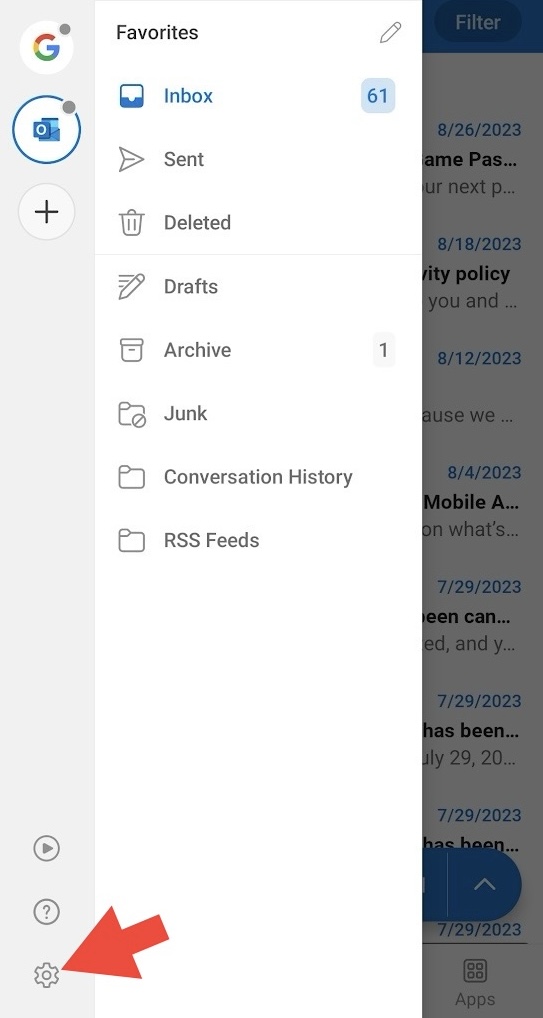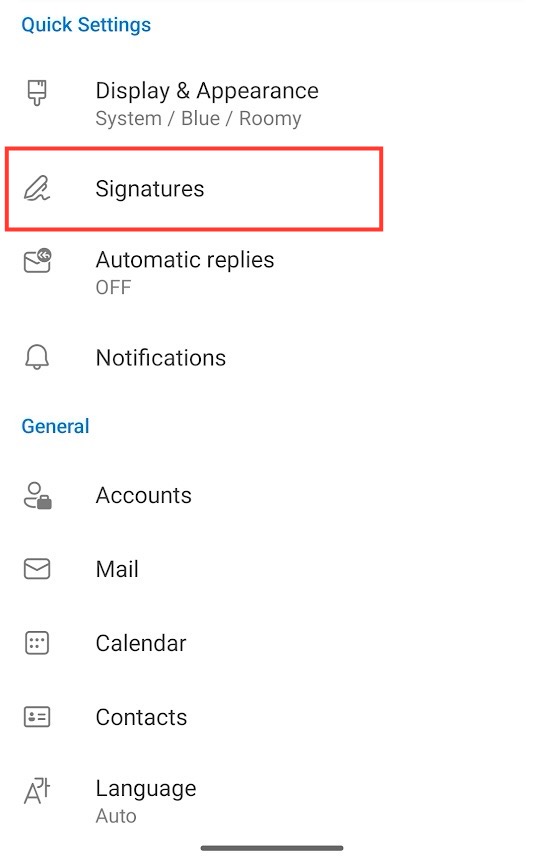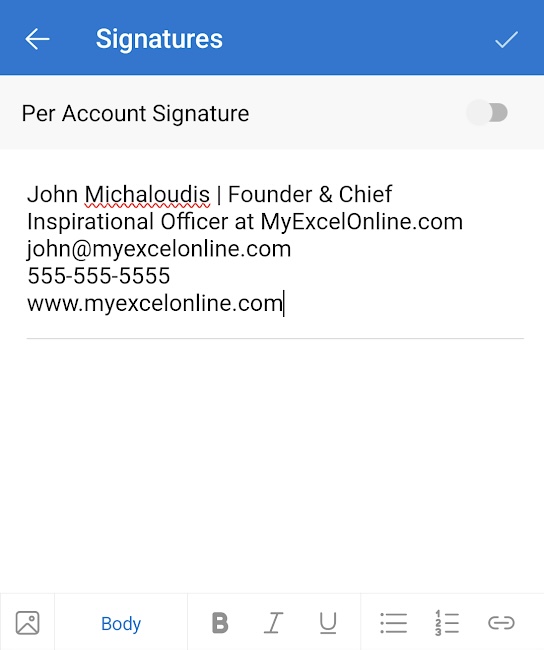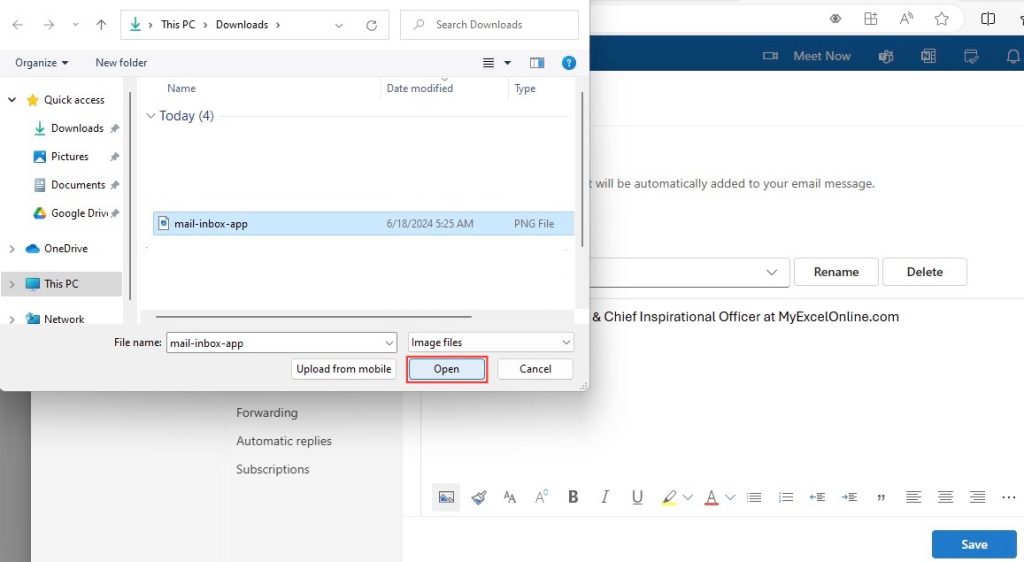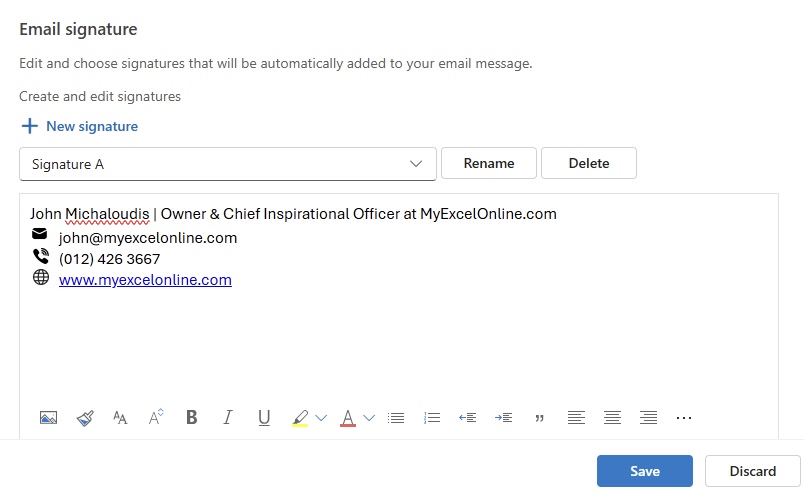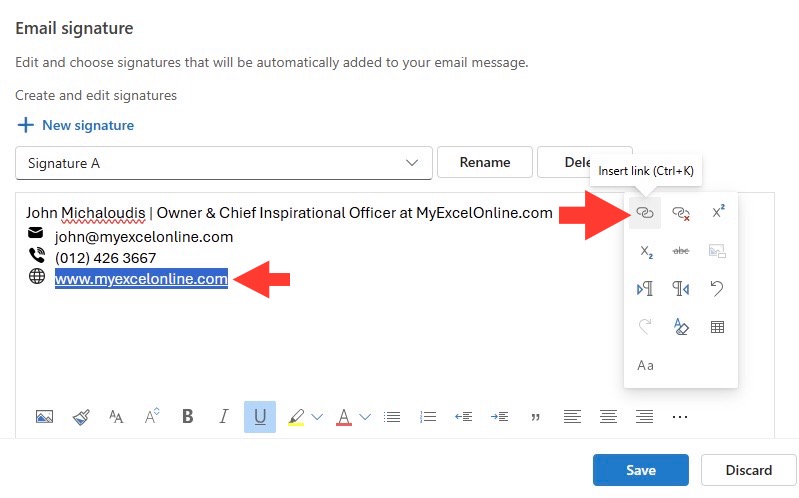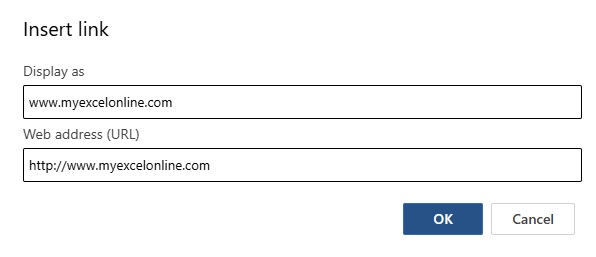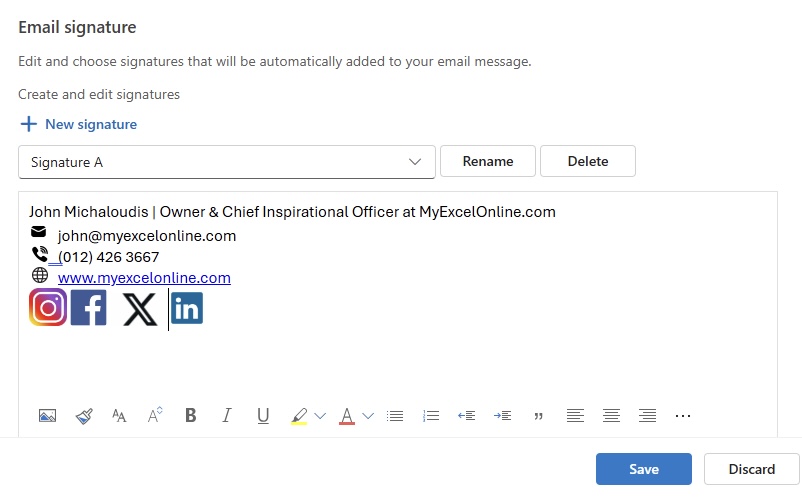In today’s digital age, email remains a fundamental means of professional communication, and the way you sign off can have a lasting impression. A professional email signature serves as your electronic business card, providing essential contact information and often the first glimpse into your personal brand or the identity of your company. Think of it like a digital handshake—your signature can convey trust, showcase professionalism, and even promote your business.
Download our 141 Free Excel Templates and Spreadsheets!
Key Takeaways
- To create an email signature in Microsoft Outlook, navigate to the ‘Compose and reply’ settings under the gear icon, and enter the desired content in the ‘Email signature’ section, ensuring it’s simple and includes essential details such as name, position, and contact information.
- Ensure the signature’s design is professional and readable by using standard fonts and optimizing images for size to maintain fast email load times, and test its appearance across different devices for mobile responsiveness.
- For consistent branding, especially in a team environment, standardize the signature template, ensure all information and social media links are up-to-date, and set the signature as the default for new messages and replies before saving.
Understanding the Basics of Outlook Signatures
Outlook signatures are more than just a name at the end of an email; they’re a tool for providing recipients with necessary information and a dash of your personal or company brand. When you set up your signature in Outlook, you’re creating a consistent sign-off that can include your name, title, contact information, and even a little personal flair with images or inspirational quotes.
Remember to think about what you include in your signature. The basics typically cover your full name, position, company, phone number, and email address. However, you can—and should—get creative within the limits of professional appropriateness. From social media icons to calls to action, your Outlook signature is a space to strategically promote yourself and your business.
Table of Contents
Step-by-Step Guide for Outlook Desktop Users
How to Create a New Signature in Outlook for Windows
Creating a new signature in Outlook for Windows is a straightforward process that will greatly benefit your email communications. Here’s a simple guide to get you started:
STEP 1: Begin by opening your Outlook Desktop app.
STEP 2: Start a new email by selecting the Home Tab and clicking on New Email.
STEP 3: Within your new email window, click on the Message tab.
STEP 4: Navigate to the Include group section and choose Signature, then click on Signatures.
STEP 5: Within the Signatures and Stationery window, you’ll find the Choose Default Signature section. From there, select the email account you’d like to tie your signature to from the Email Account dropdown.
STEP 6: Head to the Select Signature to Edit panel, click the New button, and give your signature a memorable name.
STEP 7: In the Edit Signature box, you can now compose your signature. This can include formatted text, links, and even images.
STEP 8: Once you’re happy with your signature, select OK to save it.
For each email account, you can create different signatures for new messages and for replies/forwards. This means you can have a detailed signature for the first email you send, and a simplified version for subsequent communications.
This easy-to-follow method ensures that every email you send carries your professional mark — consistently and efficiently. Remember, a well-crafted signature doesn’t just carry your contact information, it also carries your professional image.
Customizing Your Email Signature on Outlook for Mac
Creating a personalized email signature on Outlook for Mac ensures your emails leave a mark that is distinctively yours. Here’s how to customize your email signature on Outlook for Mac:
STEP 1: Fire up Outlook and head over to the Outlook menu on the top left, then select Preferences.
STEP 2: Dive into the Signatures tab where you can oversee all your existing signatures or start fresh.
STEP 3: Click on the ‘+’ button to craft a new signature. Under ‘signature name’, give it a label that’s easy to identify.
STEP 4: Now, on the right pane, let your creativity flow and design your signature. You might include your name, title, company, contact numbers, and social links.
STEP 5: Once you’ve finessed and finalized your signature layout, navigate to the drop-down menu labeled ‘Choose default signature’. From here, you can set your new signature to automatically appear in new messages or replies/forwards.
STEP 6: Close the Signatures window, and your new personalized signature is all set to make its debut in your emails.
Need to make changes? No problem. Navigate back to the Signatures tab, select your chosen signature, hit the ‘Edit’ button, update as necessary, and make sure to save your adjustments.
With these steps, customizing your email signature in Outlook for Mac is a cinch, immediately adding a professional touch to your electronic communications.
Enhance Your Outlook Mobile Experience
Adding a Signature in Outlook for Android
Are you someone who handles a lot of email correspondence on-the-go? Adding a signature to your Outlook for Android app is a smart move for maintaining a professional appearance even when you’re away from your desk. Here’s what you need to do:
STEP 1: Whip out your Android device and launch the Outlook app.
STEP 2: Tap on the Outlook icon, often found at the top-left corner of your screen.
STEP 3: Scroll down and select the Gear icon located in the bottom-left to access the Settings menu.
STEP 4: Choose the email account for which you want to create a signature.
STEP 5: Select Signature and a text box will appear where you can enter the signature of your choosing.
STEP 6: Once you are satisfied with your crafted signature, tap Done to save it.
This signature will now automatically appear at the bottom of your emails, providing your contacts with a consistent and professional sign-off. This is your chance to show your professional side, regardless of where your work takes you.
Remember, with just a few taps on your device, every email you send can carry a neatly tailored signature that reinforces your professional image.
Creating a Signature in Outlook on iPhone
If you’re handling your email communication from an iPhone, personalizing your emails with a signature is just a couple of taps away. Here’s how to set it up on Outlook for iPhone:
STEP 1: Launch the Outlook app on your iPhone.
STEP 2: Tap on your profile picture or the icon at the top-left corner to draw open the sidebar menu.
STEP 3: Stroll down this menu and tap the gear-shaped Settings icon nestled near the bottom.
STEP 4: Scroll down to the Mail section and tap on Signature to enter the signature settings.
STEP 5: A text field will appear where you can key in your personalized signature.
STEP 6: Construct your signature as you would like it to be seen in your emails.
When your signature is polished to perfection, tap the checkmark or just back out of the signature settings, and your settings will be saved automatically.
Now, each time you compose an email from your iPhone, your recipients will be greeted with your professional sign-off. It’s a simple yet impactful way to ensure that your messages are signed with a touch of personal branding and all the necessary contact details at the bottom.
This signature setup empowers you with a professional edge, ensuring correspondence reflects the high standards they can expect from your interactions whether you’re in the office or on the move.
Advanced Tips for Outlook Email Signatures
Incorporating Images and Logos into Your Signature
Adding images or logos to your Outlook email signature can significantly boost your professional image and brand identity. Here’s a brief guide on how to enrich your signature with visual elements:
STEP 1: Once inside the Signatures and Stationery dialog window in Outlook, select the signature to which you wish to add an image, or click ‘New’ to start a fresh one.
STEP 2: In the Edit Signature box, position your cursor where you would like the image to appear.
STEP 3: Click the Image icon, usually represented by a picture frame, to insert an image.
STEP 4: Navigate through your files to find a suitable logo, social media icon, or any other image that aligns with your professional branding and select ‘Insert.’
STEP 5: Your chosen image will now appear embedded within your signature layout.
Outlook supports various image formats including PNG, JPG, BMP, and GIF, allowing for flexibility in your signature’s design. After adding the image, you can adjust its size to fit seamlessly within your signature.
Adding a personal photo or company logo helps create a visual connection with recipients. They may also give a nod to your brand’s color scheme and thematic elements, making your emails instantly recognizable. Remember, though, to keep the image size reasonable to ensure your emails are quick to load and not flagged as spam.
Lastly, don’t forget to click ‘OK’ to save these changes and stamp your newfound visual identity onto all future emails.
Adding Hyperlinks and Social Media Profiles
Consider your email signature as prime real estate for highlighting your digital footprint. Adding hyperlinks and social media profiles not only improves your credibility but also allows recipients to connect with you on various platforms. Here’s how you can add these vital components:
To add a hyperlink:
STEP 1: Open the Signatures and Stationary dialog box and choose your signature.
STEP 2: Highlight the text you plan to use as your hyperlink or simply place the cursor where you want it inserted.
STEP 3: Click the Hyperlink button (it looks like a globe with a chain link).
STEP 4: In the Insert Hyperlink window, type or paste the URL in the Address box and the text for the link in the Text to display field.
STEP 5: Hit OK, and the hyperlink will become part of your signature.
To add social media profiles with icons:
STEP 1: In the Edit Signature field, place your cursor where you want a social media icon to appear.
STEP 2: Insert the icon as an image, as described in the previous section for incorporating images and logos.
STEP 3: With the icon selected, click the Hyperlink button and enter the URL to your social media profile in the Address box.
STEP 4: Click OK to apply the hyperlink to the icon.
These clickable elements not only add depth to your email signature but also serve as a passive yet powerful marketing tool. Your clickable email banner will encourage recipents to explore your offerings and network with you on different platforms.
Remember, when you make it simple for clients to discover more about you and your services, you open the door to more opportunities and connections. And if you’re using images for your social icons, ensure these are turned into clickable links to foster easy engagement with your online presence.
Optimizing Signature Effectiveness
Legal Disclaimers and Compliance Considerations
Email communication often necessitates a level of legal protection, and that’s where disclaimers come into play. If you’re working in an industry regulated by laws regarding confidentiality, data protection, or disclosures, you need to stay compliant by including a legal footer in your email signature.
Disclaimers should explicitly outline any necessary legal boundaries or responsibilities, such as confidentiality notices, contract formation policies, or regulatory compliance statements. For instance, in the recruitment sector, a typical disclaimer might remind the recipient of data protection laws and the confidential nature of the communication.
Here’s a brief overview of what to consider:
- Update the disclaimer to address sector-specific regulations and legal requirements.
- Keep it concise but comprehensive, ensuring it covers the essential points without overwhelming the reader.
- Review your disclaimer regularly to ensure it aligns with current legislation and company policy.
By incorporating a well-crafted email disclaimer, you mitigate the risk of unintended contractual agreements and protect sensitive information. This shows recipients that you take legal compliance seriously, fostering trust and professional integrity.
Always consult with your legal team when drafting or revising your email disclaimer to ensure that you are adequately covered and conveying the right message.
Design Best Practices for Impactful Outlook Signatures
For an email signature that resonates impact and professionalism, adhere to a few design best practices that ensure it’s both appealing and effective:
Keep It Simple: A cluttered signature can be confusing and detract from the message. Stick to essential details such as your name, title, company, contact information, and perhaps a logo or social media icon.
Readable Fonts: Your signature should be easy to read at a glance with standard, professional fonts like Arial, Calibri, or Times New Roman.
Optimized Images: Include high-quality images or logos if needed, but be mindful of their size; too large images can cause slow load times which can be a nuisance to your recipients.
Mobile Responsiveness: Verify that your signature looks good on various devices. With more people accessing emails via smartphones, your signature has to render well on small screens.
Brand Consistency: If your team uses email signatures, standardize them to strengthen your brand identity. A cohesive appearance across all communication reinforces a professional image.
By incorporating these design tenets, your email signature will not only convey necessary information but also bolster the professionalism of your communications and brand.
Automating and Managing Company-wide Signatures
Setting Default Signatures for Streamlined Communication
To maintain a consistent brand voice and to streamline your emailing process, setting up default signatures for new messages and replies or forwards is a savvy move. Here’s how Outlook can automate this for you:
- First, go to the Signatures and Stationery dialog window in Outlook.
- In the Choose default signature section, you’ll find drop-down selections for New messages and Replies/forwards. Select the desired signature for each to apply them automatically.
- If you create multiple signatures, you can easily switch between them for different roles or types of communication.
For example, your ‘Sales’ account might have a more formal signature with detailed contact options for new clients, whereas you could select a concise version for quick check-ins or internal communication.
Having a standard corporate signature that everyone in the company uses, possibly with variations based on department or role, ensures consistency across all emails. This not only looks professional but also makes it easy for clients to recognize communications from your organization.
Outlook’s default signature features save you the hassle of manually adding your sign-off each time and ensure that all your communications are appropriately branded, no matter how rushed you are sending that email.
Manage Company-wide Signatures Efficiently
For organizations where consistency and brand management are key, tools exist to manage company-wide email signatures efficiently. Utilizing such tools streamlines the process, ensuring that every email sends a uniform message.
Office 365 Signature Managers: Software like WiseStamp for Office 365 provides central management, allowing you to create and deploy uniform signatures across the entire company. Such tools often come with one-click deployment features and easy syncing with desktop and web app versions of Outlook.
Central Control: With a centralized management system, designated administrators can update signatures for all users, ensuring everyone is on the same page with brand messaging or contact information changes.
Consistency Across Platforms: These management systems ensure consistent signatures whether employees are sending emails from desktop clients, web browsers, or mobile devices.
Tracking and Compliance: Advanced email signature management tools often offer tracking for marketing campaigns and the ability to easily include legal disclaimers to ensure compliance with regulations.
By leveraging these systems, organizations can avoid discrepancies, save time on individual configurations, and maintain a uniform professional appearance in external communications.
Investing in an email signature management solution is an investment in your brand’s reputation, one that pays off with every email sent by a member of your team.
FAQs
How Can I Add Multiple Signatures in Outlook?
In Outlook, you can add multiple signatures to cater to different contexts, such as personal, business, or informal communication. Here’s a condensed guide to help you set up various signatures:
For Outlook desktop:
- Open the Signatures and Stationery dialog box via the Message menu in a New Email.
- Click ‘New’ to create a signature, give it a distinct name, and design its content.
- Repeat the process to create additional signatures as needed.
- Assign these signatures either as defaults for new emails or replies/forwards.
What Are the Ideal Size and Dimensions for Outlook Signature Graphics?
When incorporating graphics into your Outlook signature, like logos or profile pictures, size and dimensions are crucial to maintain professionalism and ensure your emails look great on any device. Here’s the ideal recipe for signature graphics:
- Width: Keep graphics no more than 650 pixels wide to ensure they fit within most email clients without causing the recipient to scroll horizontally.
- Height: Aim for a height between 80 to 150 pixels, striking a balance between visibility and subtlety.
- File Size: Compress images to be under 40KB to avoid slow download times, which might lead to frustration or even emails being blocked by filters.
Adhering to these sizes will ensure that your signature enhances your emails without overshadowing your main message. Keep in mind that all WiseStamp signature templates follow these size guidelines, so leveraging such a tool can simplify the process.
How do I create a unique signature in Outlook?
Designing a unique signature in Outlook sets you apart and personalizes your email correspondence. To craft your own distinctive signature, follow these creative touchpoints:
- Mix up the Fonts: Choose a scheme of one or two fonts that reflect your personal style or brand—sans-serif fonts like Arial or Calibri for a clean look or serif fonts like Times New Roman for more traditional vibes.
- Color Scheme: Implement company colors or select a palette that matches your professional demeanor. Just make sure the text is legible against the background.
- Add a Personal Touch: Include a favorite quote, a line from your mission statement, or any other element that conveys your values and personality.
- Include Social Handles: If relevant, add icons and hyperlinks to your LinkedIn, Twitter, or other social platforms to enhance networking potential.
- Use Spacing Wisely: Make use of white space to avoid a cramped appearance, ensuring each element of your signature has room to breathe.
Experiment with these elements until you find a balance that feels right. An entirely unique signature tells a story, your story, at the closure of every email conversation.
John Michaloudis is a former accountant and finance analyst at General Electric, a Microsoft MVP since 2020, an Amazon #1 bestselling author of 4 Microsoft Excel books and teacher of Microsoft Excel & Office over at his flagship MyExcelOnline Academy Online Course.

